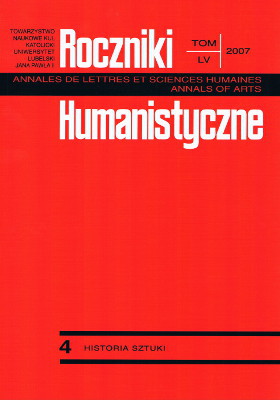Bydgoskie kamienice z okresu międzywojennego
Abstrakt
When in January 1920 Bydgoszcz again returned within the borders of Poland the town’s character was dominated by the buildings of the end of the nineteenth and the beginning of the twentieth century. This does not mean that the buildings of the inter-war period did not leave a trace on the urban development of the town. The paper presents some questions concerning the inter-war tenement houses from Bydgoszcz.
In the 1920s it is worth noting the activity of the Building Office of the Bydgoszcz Magistrate. It built houses with many flats on the territory that belonged to the town (at 13 Piotrowski Street, Babia Wieś Street, 64 Toruńska Street, 5 Libelta Street, and 2 Weyssenhoff Street). The engineer architect Bogdan Raczkowski designed all the buildings. He was a graduate of Lvov Polytechnic. The buildings are examples how one epoch of historicism came to an end, and the second epoch of functionalism was initiated. In the 1930s private investors ordered a series of tenements (at 20 January Street, Zamojski Street, and Piotrowski Street). Their main architect was Jan Kossowski.
Bibliografia
Niemojewski Lech, Dwie szkoły polskiej architektury nowoczesnej, „Przegląd Techniczny” 73(1934), nr 14.
Olszewski Andrzej K., Architektura Warszawy (1919-1939), [w:] Warszawa II Rzeczpospolitej, z. 1, Warszawa 1969.
Sokołowski Stanisław, Nasze urzędy miejskie. Budowa i rozbudowa naszego miasta, „Dziennik Bydgoski” 1925, nr 272.
Skuratowicz Jan, Architektura Poznania 1889-1918, Poznań 1991.
Wspaniałe dzieło ociemniałych żołnierzy w Bydgoszczy, „Dziennik Bydgoski” 1939, nr 155.
Wysocka Agnieszka, Bogdan Raczkowski (1888-1939) − architekt i urbanista międzywojennej Bydgoszczy, „Kronika Bydgoska” 26(2005).
Wysocka Agnieszka, Działalność architektoniczna Jana Kossowskiego w Bydgoszczy w latach 1923-1939, „Materiały do Dziejów Kultury i Sztuki Bydgoszczy i Regionu” 2003, z. 8.
Copyright (c) 2007 Roczniki Humanistyczne

Utwór dostępny jest na licencji Creative Commons Uznanie autorstwa – Użycie niekomercyjne – Bez utworów zależnych 4.0 Międzynarodowe.





